How to mix songs for dance routines
8 Beginner Tips – 8 Count Audio
by Norm Ramil, 8 Count Audio
Need to edit a single song to make it shorter for your routine? When it comes to choreography, music editing for dance can be tricky but very rewarding. Before you start cutting, there are a few things to figure out first. And once you do start chopping and pasting, you’ll want to also take a step back and make sure your shortened song still sounds musical, which leads to better choreography. Here are 8 rules to live by as you cut a song down to size.
1: Understand song structure
Here’s a basic layout of a typical pop song. The essential parts are an intro, a verse, a chorus, a “wildcard” section, and then a final chorus. The wildcard section is that part of the song that takes an interesting turn before getting back to the final chorus: it could be a bridge, a breakdown, a solo, or a “middle 8” section, or a combination of these (I’ll expand on this idea in a future post).
The optional parts aren’t in every song, but you’ll often find a pre-chorus that goes after the verse and literally sets up the chorus. Many songs will also have a section that sounds like the intro, except it goes between the chorus and verse 2 (it’s a way to transition from the high energy of the chorus back down to the medium energy of the verse). Understanding the song’s anatomy will help you envision what cuts will make sense, and, just as important, which cuts won’t sound great.
2: Think in 8-counts, not seconds and minutes
It helps to know how many 8-counts you’re dealing with in each song section, since 32 seconds of music doesn’t really tell you much in terms of planning your choreography.
Most pop songs are in 4/4 (“four – four”) time, and musicians group together every four beats as a “bar” or a “measure.” That translates easily into the dance world, where you guys consider every eight beats as an “8-count.” So two bars of music equals one 8-count.
Some songs aren’t easily countable if they’re not in 4/4 time. It can get a little complicated, but rest assured that if your song has a triplet feel, you can often still find a way to think of it in terms of fours, and therefore, in terms of 8-counts. More on this in a future post.
More on this in a future post.
When you cut or keep a part of a song, make sure you’re not using fragments of 8-counts. Cutting out (or keeping in) 12 counts (or 1.5 eight-counts) of a section is going to sound uneven and will be difficult for you and your team to count out. There are always exceptions, but this is a good rule to stick to in most cases!
3: What’s the plot line for your choreography?
Where do you want the choreography to go as your song moves from start to finish? Where’s the peak or climax going to be, and how are you going to set it up?
Plenty of factors are involved here, but the basic idea is to have a vision of how you want your routine to proceed from the beginning to the end of the edited song. You’ll want the routine to use the music as a way to unfold new ideas throughout the song, evolving from section to section. This should give you some insight about what parts of the song to keep and where to cut.
Some of the things that could affect your decisions at this point are: the style / category of dance, what judges have said in the past, and your team’s skill level and how it might grow over the next few months.
4: Take advantage of musicality
Every song has multiple layers of creativity: the songwriters, the artists who record the track, and the producers who make the song and its parts sound a certain way. Each of these layers probably has lots of musicality that you can use for your choreography.
Musicality can be a particular moment in the song, but it can also be a gradual development of an idea over several 8-counts.
Maybe the songwriter used a key word or line in the lyrics that’s important to the story of your choreography, or maybe the bridge melody has plenty of tension that would look great translated into choreo. Or it could be that the singer put a little something extra into the energy of verse two, and you might like to take advantage of that in your routine. The little tricks that a producer puts into a song (maybe the start of verse 2 has some cool, echo-y drums for just 4 beats, or there’s a “woosh” sound that leads up to something big) are definitely things to take advantage of as you choreograph.
5: Think evens, not odds
A balanced-sounding song section usually has an even number of 8-counts–typically 4 or 8 of them. You might be tempted to cut out a certain 8-count you don’t like, but to keep things sounding balanced, you’ll want to figure out a way to cut out 2 or 4 eight-counts instead of 1 or 3.
Let’s take Taylor Swift’s “You Belong With Me” as an example. Here’s the first half of verse 1:
Notice that this group of four 8-counts is pretty firm as a single unit. Not only would the lyrics not make sense if you cut out the last 8-count, but the whole thing would sound incomplete. Our ears just seem to like to hear verses and choruses that are made of 4 or 8 eight-counts! Keep this in mind as you cut.
This rule often means that you should try to cut out entire sections instead of just parts of sections. If you are going to cut out part of a section, try to only cut it in half.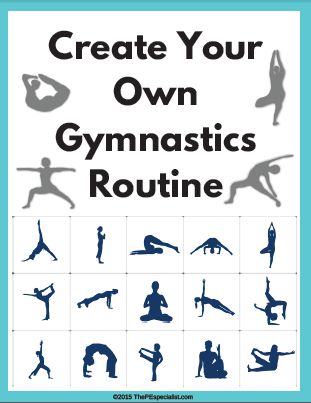 This strategy would work for our example: the full verse is 8 eight-counts, and if you cut it in half, you’d have 4 eight-counts, which is what you see in the screenshot–and it still sounds like a complete, balanced musical/lyrical thought.
This strategy would work for our example: the full verse is 8 eight-counts, and if you cut it in half, you’d have 4 eight-counts, which is what you see in the screenshot–and it still sounds like a complete, balanced musical/lyrical thought.
Of course, this is just a general rule, and you can break the rules with some creativity–I’ll cover some of these kinds of tricks in future posts!
6: Zoom out for balance
Now that each section is balanced (either because you kept a section whole or you only cut it in half…as opposed to some weird fraction), you’ll want to make sure that the whole song is balanced.
You’ve probably decided to cut out the least important parts. Do the remaining parts still tell a story like the original song did? And can your choreography tell that story?
Since a good story has a beginning, middle, climax, and ending, make sure your shortened song still has some kind of intro, a verse, a chorus, something interesting after that (the “wildcard” section I talked about in #1 above), and then a final chorus or outro.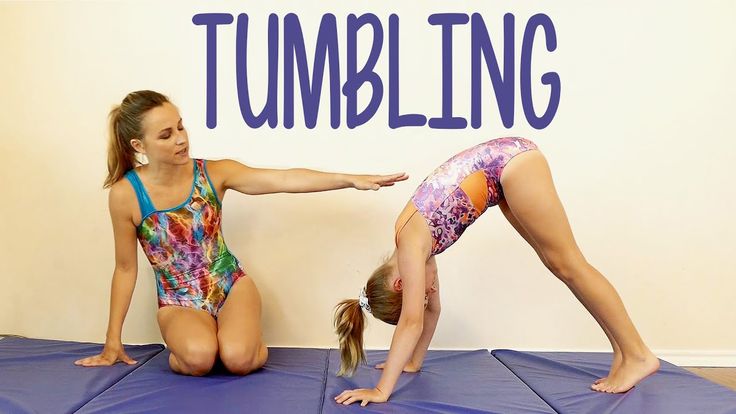 It’s definitely possible to have all of that in 2 minutes and 30 seconds, and it’s usually do-able under 2 minutes for UDA routines or halftime performances.
It’s definitely possible to have all of that in 2 minutes and 30 seconds, and it’s usually do-able under 2 minutes for UDA routines or halftime performances.
7: Use your eyes
If you’ve cut up your song and have arranged the pieces, does it look balanced? Here’s a screenshot of the original length of Justin Timberlake’s “Not A Bad Thing”:
I’ve cut the song up into sections, and you’ll notice how every section looks like the same length as the others (each is four 8-counts long). Your shortened version should try to stick to this kind of visual balance. That doesn’t mean that each section has to be the same length, but by just looking at how your edited song appears on your screen, you can spot a section that maybe goes on too long or isn’t long enough.
If something looks out of balance on the screen, it’ll sound uneven, and the choreography will likewise feel and look unsettled.
8: Use your ears
Take a break (maybe an hour, but ideally a day). Come back with fresh ears and listen to your finished product: does any one section go on for too long compared with other sections? Is there a musical idea that seems unfinished? Is there enough tension, and is it followed by resolution? Is the climax obvious?
I’ll get into actual cutting techniques in the next few posts, but for now, let’s suppose that your edits sound good, clean, and natural. Would someone hearing your edited song say, “ok, it’s a mini-version of the full song,” or would she say, “whoa–that was kinda crazy?” If you’re using a well-known track, people have some pretty firm expectations of how the song should sound. By sticking to these basic editing rules, you can take a big step toward keeping the audience focused on your choreography over the music.
Up next:
I’ll get into the details of editing techniques for single songs, tricks to use and enhance musicality, and some creative edits to get around typical cutting challenges.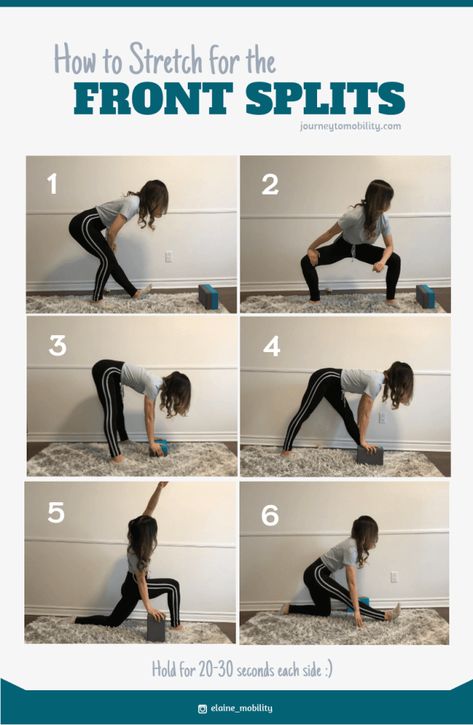 If you’d rather have your song professionally cut, send me a message and you can stay focused on choreography instead of music decisions!
If you’d rather have your song professionally cut, send me a message and you can stay focused on choreography instead of music decisions!
Mixing Dance Music - A Comprehensive Guide To Nailing Your Mixdowns Every Time!
Getting the perfect mixdown can be a tricky task for even the most seasoned of producers and mix engineers.
So whether you’re a pro or just starting out, this article is here to deliver a quick and easy step-by-step guide to ensure your mixing is up to a high standard.
We here at Studio Slave understand that there are literally hundreds of self-help sources and articles teaching a wide range of mixing techniques, however, what most producers struggle with, is putting it all together. You might understand complimentary EQ and Parallel compression, but there’s no point having the building blocks if you don’t know how to build a house!
So to that end, Here it is, our step-by-step guide to the mixing process…
STEP-BY-STEP GUIDE TO THE MIX PROCESS
We have written this article in a checklist style format.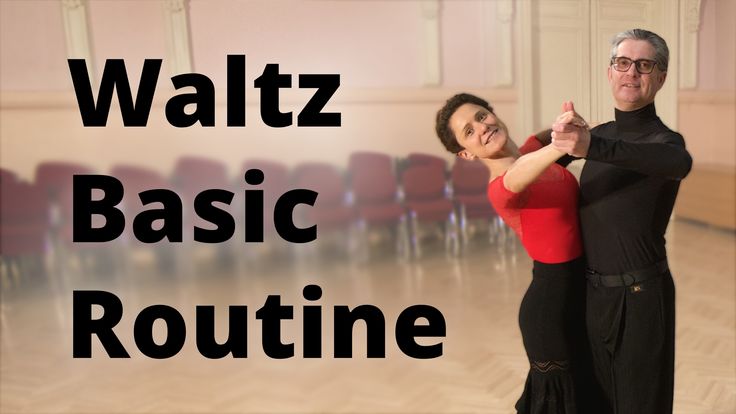 Feel free to print it off and stick it somewhere useful so you have something to refer to whilst mixing. This is a brilliant way of getting positive, realistic outcomes!
Feel free to print it off and stick it somewhere useful so you have something to refer to whilst mixing. This is a brilliant way of getting positive, realistic outcomes!
A quick couple of points to mention is that as previously mentioned, we have written this as a linear step-by-step guide to getting your from an unmixed track to a finished mix-down.
In reality, mixing is far from linear. Once you get better at mixing you will find a workflow that works for you, and often find yourself jumping back and forth from one task to another. For the new guys amongst you, stick to our guide until you feel safe to try your own methods. Our guide has been written in this particular order because it works!
“Remember, mixing electronic music is fun. Learn the rules then break them. always use your ears!”
Treat Your Room Acoustics
Before we dive head first into the nitty gritty stuff, we need to tackle the things outside of the DAW (digital audio workstation).
Namely, your ears and your room.
Room acoustics is one of those things that always seems to be last on producers to do list when in reality it should be one of the main priorities before buying any new plugins or hardware. But why?
Every single decision you make is based on the sound that travels out your speakers, around your room, and into your ears. So considering that treating your room acoustics is fairly cheap to do, there really is no excuse for not doing it. Plus, its the most logical thing to improve between your ears and the speakers.
If you would like to learn more about setting up your room and speaker placement, check out this article.
We can guarantee that once your room is treated, you’ll notice a vast improvement in your mixing abilities.
A room can cost as little as £50 – £100 to treat if you do it yourself, and without going too deep into acoustics, the reason it’s so important is to do with how sounds bounce around in a room, either reflecting, absorbing or diffusing.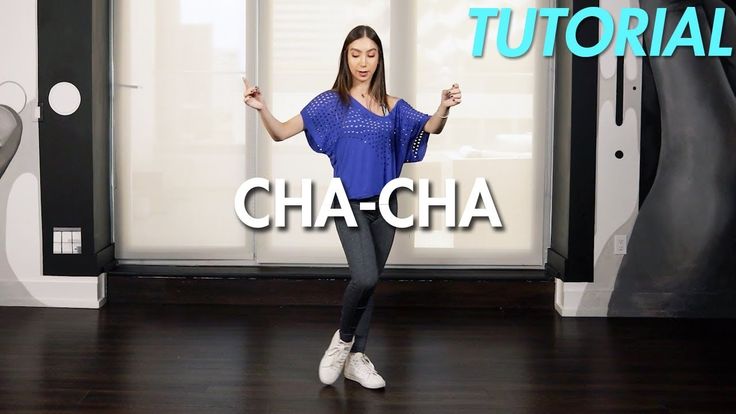 The most troublesome frequencies are the lower ones below 300Hz as they can tend to cumulatively add up or cancel each other out altogether!
The most troublesome frequencies are the lower ones below 300Hz as they can tend to cumulatively add up or cancel each other out altogether!
If your room is sounding really bad then you may have multiple frequencies that cancel out. These are known as room modes or standing waves, and can cause you to make drastic EQ changes on parts that don’t require them at all!
If you would like to learn more about monitoring and how to treat your room, check out this youtube video that explains it all in good detail!
Sorry, there was a YouTube API error: API key not valid. Please pass a valid API key. Please make sure you performed the steps in this video to create and save a proper server API key.
Please pass a valid API key. Please make sure you performed the steps in this video to create and save a proper server API key.
Now that we have got the boring stuff out the way, let’s dive into the mixing process!
SET YOUR MONITORING LEVELS
Set your monitoring levels so you can still talk at a conversational level over the mix. The only times you should turn up the levels are:
- At the end of the day
- before having an extended break
- to check the low-end balance
Other than these occasions there is very little reason to need to have the level any louder, all this will serve to do is fatigue your ears and potentially contribute to hearing loss. It has been proven that the human ear is much better at being able to balance parts at quieter levels anyway. Louder listening levels trick the brain into thinking there is more bass and treble than there actually is, which makes the track feel louder. To be specific, the ideal listening level is 83dB SPL. If you want to know more about this then check out this very useful explanation of Bob Katz K system.
To be specific, the ideal listening level is 83dB SPL. If you want to know more about this then check out this very useful explanation of Bob Katz K system.
To learn more about using Psychoacoustics to get more out of your mixdown, check out this article:
StudioSlaves guide to Psychoacoustics
LISTEN TO THE REFERENCE TRACKS
If you supply a rough mix of any given track to 10 different mix engineers, It is highly likely that you will receive a very wide variation of final mixes back. – This is because each mix engineer hears differently, or subconsciously imparts their own mixing style on the track.
In most cases, we can assume you will be mixing your own music. So you know exactly what direction you will be taking the mix-down in. If however, you are mixing someone else’s music, then always have an unmixed version of the track at hand in your DAW that can be referenced to ensure you are staying on the right track. This also gives you the opportunity to listen to parts of the track which may be worth accentuating, or possibly even searching for the parts that may be sloppy from the recording process that you may wish to rectify later on.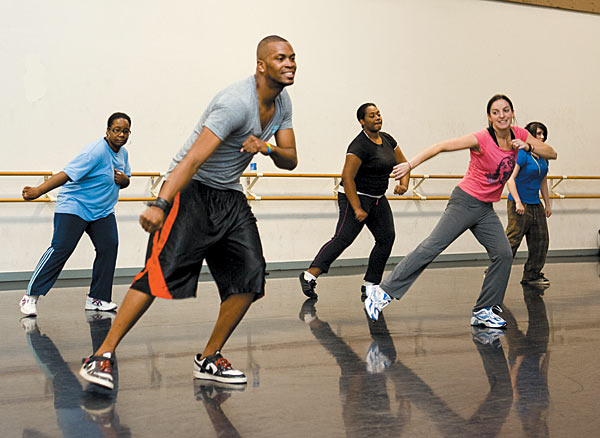
REFERENCE TRACKS
It’s common practice to import one or two tracks alongside your project in the DAW, these need to be well produced and mixed tracks that are in the same genre as the track you are producing.
Always refer back to these tracks when making comparative mix decisions. They will tell you a lot about the balance, tonality, width, and dynamics of your track.
Why are they so important I hear you say? Well, think of these reference tracks as your compass. It can be very easy for your ears to get fatigued when mixing for long periods, causing you to ‘drift off course’. These references are there for making objective comparisons.
Us humans work predominantly on relativity. If we have nothing to compare our own project to, then, of course, we are going to lose track and inevitably end up with a car crash of a mix-down.
MIX PREPARATION
“Failing to prepare is preparing to fail”
Whilst it is extremely helpful to segregate the separate production phases such as production, mixing and mastering. It’s equally important to prepare yourself for the mix stage from the very second you open your DAW.
It’s equally important to prepare yourself for the mix stage from the very second you open your DAW.
Things that may seem irrelevant actually have an extreme knock-on effect by the time it comes to the mix stage, such as:
Sample Selection
Arrangement
Key signature & Choice of notes
These may seem trivial but bad or clashing samples can make a project almost impossible to mix right from the get-go.
Arranging can be used to your advantage to give each element in your mix its own space and bit of limelight at certain times within the track. This can significantly reduce issues with loudness and muddiness as parts fight for space.
To learn more about mix preparation, check out our Mix Fundamentals & Preparation eBook
Using arrangement to allow each instrument to have its own space and to create a sense of energy using tension and resolution.
Another example of a common mistake, is working in a key such as G minor, and placing every single element on that root key of G.
Not only does this make for a boring track but it also means that all your parts will be stacking up on the frequencies that relate to G and their harmonics. knowing how to spread your instruments out evenly across the frequency spectrum is a skill that acquires a lot of practice. However, once this is mastered you will be well on the way to getting mixes which are clear and loud!
Now that we have mentioned some of the production prep stuff, let’s mention some of the technical and workflow preparation.
Getting your DAW project organised at the start of the mixing phase will allow you to shut off the technical side of your brain, this, in turn, is proven to help you be more creative, as you are no longer getting bogged down with mundane tasks such as colour coding or ordering tracks.
Heres’ a list of important things to do for the mix preparation stage:
- Remove any unused or unwanted tracks
- Rename all tracks
- Colour code tracks
- Order tracks
- Remove silence from any clips
- Setup any routing, groups, buses & FX returns
- HPF everything
We have kept this section pretty vague because we go into great detail into mix preparation in our new Tech House 2017 course.
GAIN STAGING
Gain what?
To keep it short, gain staging is the act of ensuring that the levels of your parts are correct at every stage of the mixdown process. This was essential for hardware to ensure there was a good signal to noise ratio. It’s less important now with digital audio but you still need to be mindful to leave plenty of headroom to avoid digital distortion.
The rules are simple, Never clip your meters at any stage and you are unlikely to have any problems with digital distortion.
The second reason for gain staging properly is that some VST plugins have been designed to very closely emulate their hardware counterparts. This means they will have an optimum voltage where the plugin works best (+4dBu or 0VU for hardware).
By ramming a high gain level into a plugin, you are forcing it to crunch numbers that it isn’t capable of crunching properly, thus causing distortion or unwanted artifacts.
So, you have been warned. Gain staging is very simple to do if you are aware of it from the start.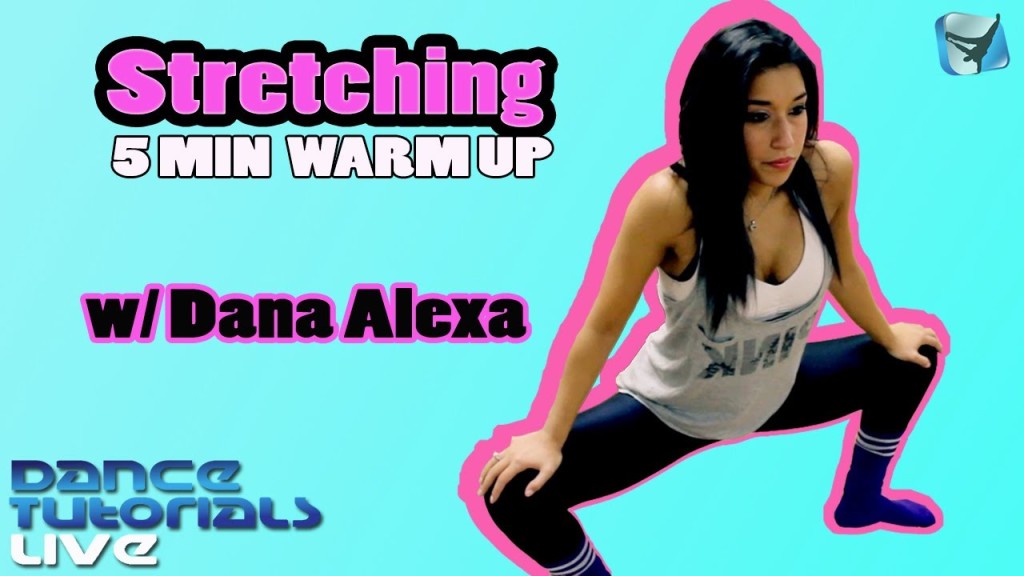 However, ignoring it will result in mixes that will lack clarity and may show signs of audible distortion.
However, ignoring it will result in mixes that will lack clarity and may show signs of audible distortion.
THE ART OF BALANCING
Balancing is one of the single most fundamental concepts for mixing a track. It only takes one or two instruments to be out of whack and it can make or break the record. Almost all the other aspects of mixing will relate to how the track is balanced in some shape or form.
The fader balance – this is the balance of each track against one another
EQ, or tonal balance – If the ‘fader balance’ is controlling all of the projects individual channel faders relative to one another, the tonal balance can be thought of as lots of miniature faders, each controlling different frequencies of a single track. It’s the microscopic version of your fader balance and allows you to control all the frequencies that make up the tone of a sound relative to one another.
A good way of understanding this concept is by looking at a graphic equaliser. These hardware units usually have up to 30 faders, each hard-wired to a set frequency which can be used to adjust the tonal balance of a sound.
These hardware units usually have up to 30 faders, each hard-wired to a set frequency which can be used to adjust the tonal balance of a sound.
Compression – This is a tool that can help us control the dynamics of a track. some parts may have a transient hit which is some magnitude louder than the sustain portion. Compression can help us even that out and find a more comfortable static level for our part.
So in the case of compression being used as a balance tool, we are using compression to reduce the difference between the attack and sustain portion of the sound. Yes, yet another form of balance!
being able to hear the nuances of a sound and understanding what needs to be done to achieve a good balance takes a long time to get good at. but my advice to you is to do as much work as you can first with nothing but your channel faders. Only once you have exhausted all your options with the faders should you move to other things such as panning, EQ, and compressors.
If you are new to mixing, all these extra devices and concepts will only serve to confuse you before you are ready to learn them. We guarantee that with a little bit of time and effort you will be able to get the majority of the balancing done with nothing more than your faders, some patience, and a good set of ears.
A quick tip with balancing is to set a level for the most important part first, then work all of the other parts levels around this part in priority order. once again this goes back to what we said about comparisons and relativity earlier. This method is a good way to prevent you from chasing your tail and ending up with a lot of digitally clipped tracks and sore ears.
Balancing really is a massive subject in itself, which can’t possibly be covered in a few paragraphs. Check out these articles for tips and techniques on achieving a good balance.
The Pink Noise Mix Balance Technique Explained
Balancing In Mono
Striking The Perfect Balance – Static Fader Levels
Also, check out our eBook series which looks at all aspects of the mix in much more detail.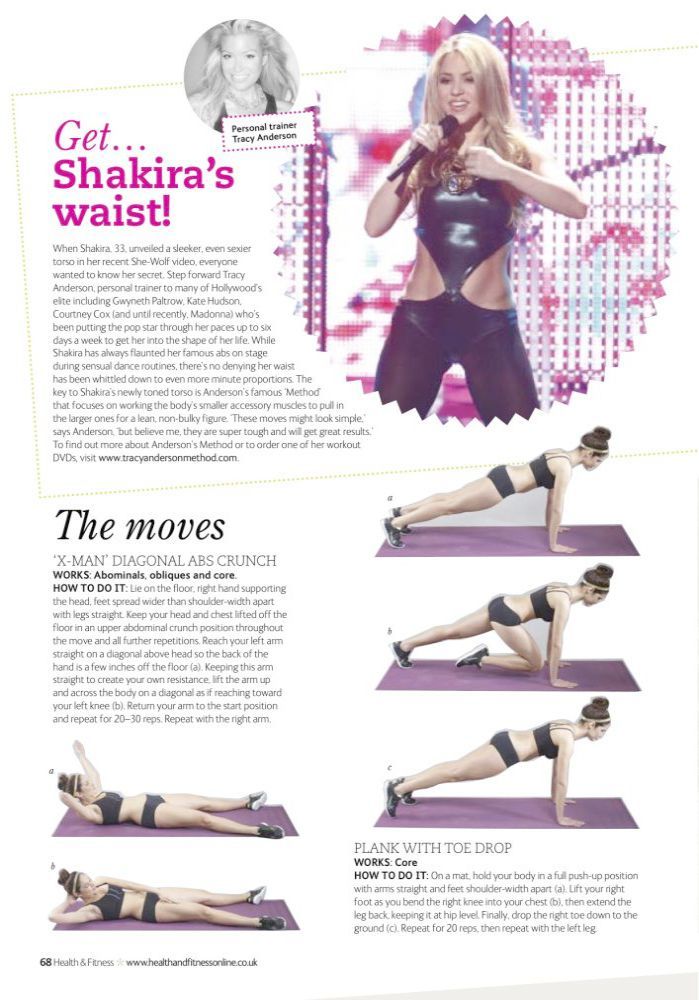
PANNING
Panning gives you a chance to create a bit of space in the mix at a fairly early stage and allows you to start to build your track visually across the horizontal width of your track also known as the stereo spectrum or stereo image.
Much of panning is down to your creativity but a few top tips are:
Keep things balanced – if you pan something hard left, then look for a similar sound to pan hard right. this will prevent your mix sounding lopsided
keep like instruments apart like naughty children – Parts with a similar frequency spectrum will clash if they are played at the same time in the same area of the spectrum (such as straight down the middle) and parts that clash will very quickly muddy up your carefully balanced mix. Avoid this by panning these parts in separate directions. This doesn’t have to be hard pan positions, just enough to give them each space and separation they deserve.
keep your power elements central – parts such as the kick, snare/clap, lead vocal and bass are best kept in the centre of the mix where their energy can be equally distributed between the two speaker cones for maximum power and effect.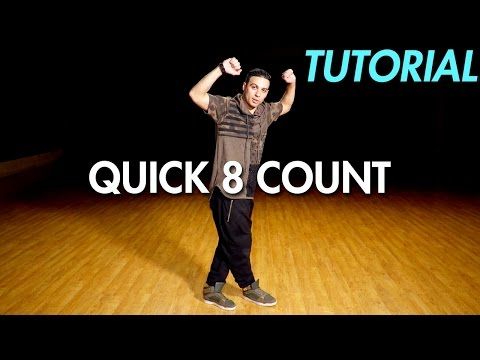 This also keeps the stereo image nicely balanced.
This also keeps the stereo image nicely balanced.
Higher parts can be panned more than lower parts because phasing becomes less of an issue as we go higher up the frequency spectrum. So hi-hats and high-end percussion can be panned fairly hard. whereas stuff below around 2-300Hz such as bass parts are best kept in the centre of the mix.
Bass parts being in the centre is not only important to reduce phasing, but also because we want our bass to be big, bad and powerful. so it must be central for this to happen. Finally, the human ear is very bad at being able to spatially locate bass parts anyway, so doing fancy panning on low instruments is unlikely to be noticed.
For more information on panning check this article out.
EQUALISATION
Now that we have our track nicely balanced using the faders, we can now go into the individual tracks and start to make some tonal balancing decisions. This can be broken down into a few smaller stages.
To achieve a loud and clear mix the first stage is to remove any parts that don’t contribute to the sound or tone you desire.
BAND PASS FILTER EVERYTHING – AKA BRACKETING
If you haven’t done this at the mix preparation phase, then now is the time to remove anything that doesn’t need to be there. If you’re already fairly mix savvy you may be wondering why this stage is named band pass filtering instead of high-pass filtering?
The reason that we high pass filter everything is to remove any cumulative low end rumbly noises which only serve to muddy up our mix and take up valuable space. So with that in mind, the exact same concept should apply to the high end.
If you have a part which has an excessive high end, then get rid of it and save this airiness for more important parts such as hats, reverb tails and cymbals.
A prime suspect for this issue are parts such as buzzy electric guitars. Sometimes they may have a whole load of static or white noise above a certain frequency, which doesn’t contribute to the sound other than to waste headroom.
Choose your filter slopes wisely as they can drastically effect the sound of the signal. Also try to refrain from making the newcomers mistake of high pass filtering the life and soul out of your track.
Also try to refrain from making the newcomers mistake of high pass filtering the life and soul out of your track.
Alternatives to HPF AND LPFs (high and low pass filters) are shelving filters, which can achieve similar results in a slightly more subtle way.
SUBTRACTIVE EQ
At this point you’ve balanced, panned and band-pass filtered any tracks that require it, but some of your elements are still sounding a little bit lumpy, all over the place and on top of one another. This can be sorted using subtractive EQ.
This is the bulk of the EQ phase where you are essentially just adjusting all of those micro faders we mentioned earlier. This needs to be done for each and every track in the mix, not to make each sound as big as possible, but to get each sound balanced and to sit well together in harmony!
doing this will help your tracks gain clarity. especially parts such as vocals which will sit more comfortably in the mix and become more intelligible once they are EQed.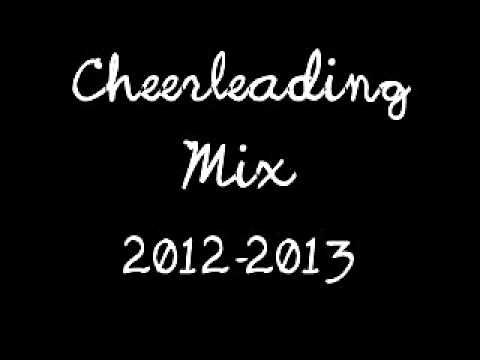
Tonal balances can also be improved by reducing any resonances within a recording or sample. Think of a resonance as a lump that is awkwardly sticking out of your nice balance. simply use EQ to knock it back down into place.
TIP – Just because something is resonating doesn’t necessarily mean it needs to be cut. If you decide to cut it, don’t assume you need to hack at it with a butcher’s knife. sometimes a cut of a few dBs (decibels) is all that’s required.
The most important area for subtractive EQ is the low mids (around 120 – 500Hz) as this is the area where almost every instrument will be present, be it the fundamental frequency or its harmonics.
Here are some problematic EQ ranges and what you can expect to listen out for:
- 0Hz to 80Hz = Sub, bass, boom and rumble
- 80Hz to 250Hz = Bass boom and boxiness
- 250Hz to 500Hz = Muddiness and boxiness
- 500Hz to 900Hz = Honky or nasal
This chart shouldn’t be taken for gospel because everyone hears differently.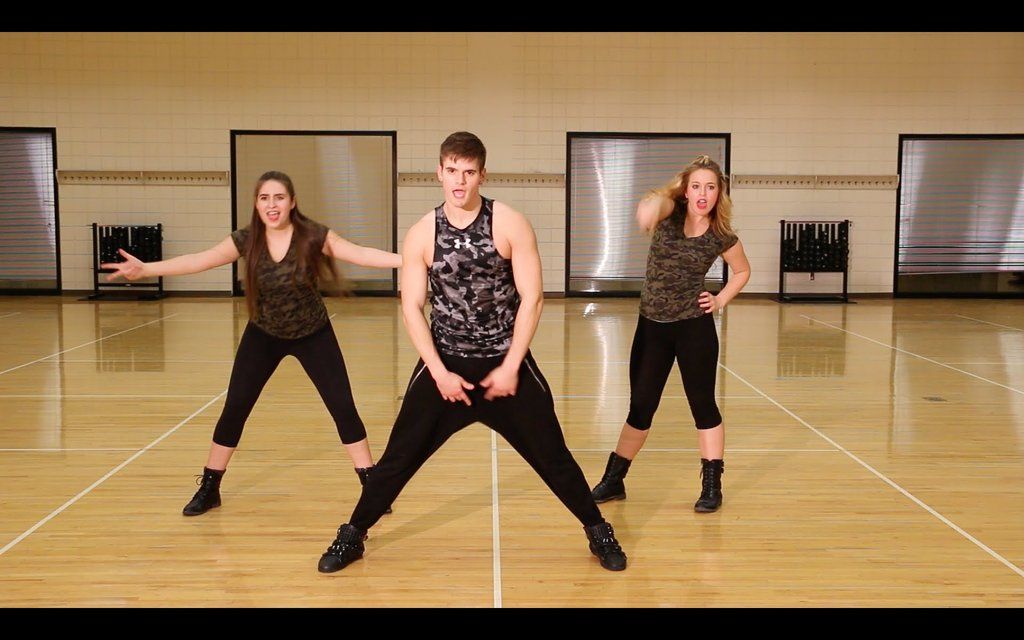 However, these problem areas are widely agreed upon by experts within the electronic music industry.
However, these problem areas are widely agreed upon by experts within the electronic music industry.
For more info on EQ check out our articles & ebooks.
EQ Fundamentals Understanding Sound
Mixing In Live – Equalisation
Compression is a mammoth subject. And can get very complicated because it can be used to achieve a vast array of very different results such as:
Reduce the dynamic range – loud parts compared to quieter parts
Make parts sound louder – either by increasing the sustain portion of a signal or by increasing the RMS of a signal with parallel or standard compression
Even out a performance – make a drummer or vocalists notes of a more consistent level
Control the dynamics of a part – make the attack or sustain either louder or quieter
Make parts groove to the beat – side-chain compression
Make a group of parts sound more coherent – glue compression
Stop signals going above a certain threshold – limiting and brick wall compression
Some, or potentially even all of these types of compression could be implemented into a single mix. so you can begin to see why it is such a confusing subject for a new producer. To add to the confusion there’s also a multitude of saturation, distortion, and tonal characteristics that certain vintage compressors are famous for.
so you can begin to see why it is such a confusing subject for a new producer. To add to the confusion there’s also a multitude of saturation, distortion, and tonal characteristics that certain vintage compressors are famous for.
If you would like to learn about different types of compressors, and uses of compression then check out these articles.
Compression Explained
Parallel Compression
Multiband Dynamics Explained
Or alternatively, check out our Ebook covering compression.
ADDITIVE EQ
Whilst subtractive EQ is commonly used to get rid of problematic frequencies, additive EQ can be used to highlight the nice parts of your mix.
At this stage, you should have a good idea of where the good tonal areas are of each sound. For example, if you have a piano sample you should know which areas to boost to make it sound more “piano’ey”.
Likewise, If you have vocals you should sweep a peaking filter through the spectrum and you will hear parts that may become present, crisp and warm – these are the areas worth boosting.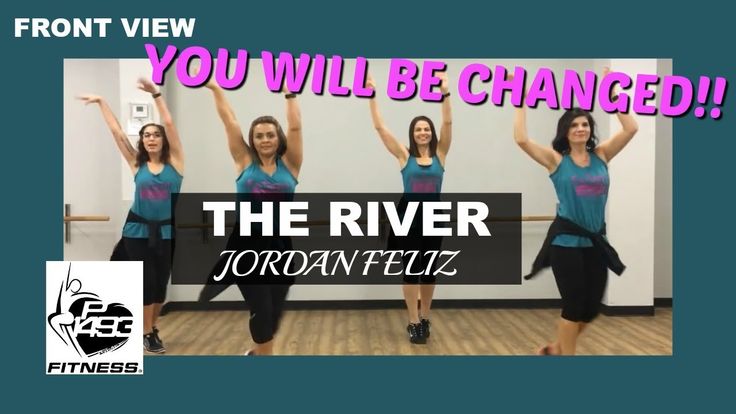
Additive plugin EQ’s are generally models of older hardware vintage EQs. This is because the analog circuitry has a more exciting and musical sound to it. Many EQ’s will impart a distinctive tone or colour on a sound. Which is why EQ’s such as Neve, Manley and Pultec EQs are so highly sought after.
Try not to go too overboard here. It’s very easy to get carried away so keep the boosts gentle and use wider, more natural Q settings. Don’t accidentally unbalance the mix at this late stage in the game.
ADD SPACE/DEPTH
Many of you will work on the ‘space and depth’ of your track during the production phase, using devices such as reverbs and delays.
This space & depth phase is here just to remind you to re-address your settings, particularly on devices such as reverbs.
Whilst in the production phase you may have quickly grabbed the first reverb preset you tried, just so you could quickly get an idea down. This reverb may no longer work now that all the rest of the parts are in the mix.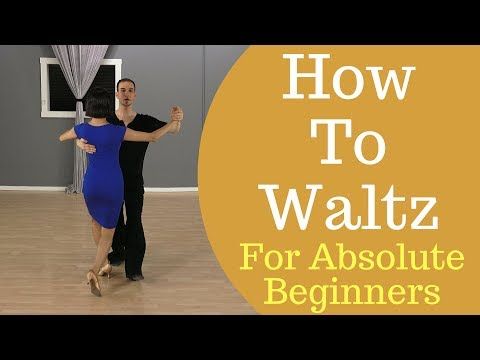
You have two main choices at this stage, you can either salvage the situation and tweak the spatial effects you are already using, or, in most cases, I suggest starting from scratch now that your decisions will be more informed with all of the elements present in the mix.
Reverb strategies are covered at length in our reverb and depth ebook, but to get you started here’s some ideas:
Use three reverbs – one small reverb for percussion parts and to create a glued drum room, one larger one to create some distance, and a final one for special effects or splashes.
Use a single reverb – this emulates how older studios only had a single hardware reverb unit to work with, so it would get used on nearly all the parts of the track. This can help to cement a certain level of coherence but the danger of doing this is that the same reverb can quickly cause your parts to lose their sense of separation and form into one muddy mess if you don’t EQ everything carefully.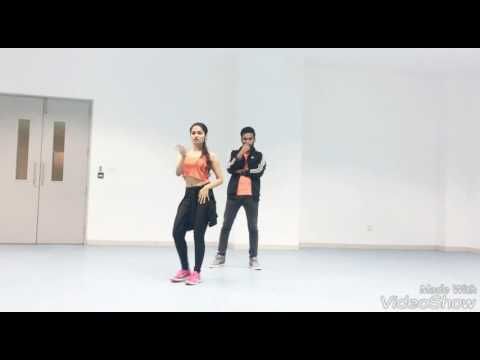
Use multiple reverbs for set tasks: Have a small reverb set up with minimal tone. this is the blending reverb for gluing parts together. A second reverb can be used for creating sustain and tone, plates are brilliant for this because they are very dense. Finally, a third reverb can be used for space & size, such as a large hall.
Don’t use reverb at all: If you have a mix which is already very busy, then use a tight set of delays as your reverb instead. they can get the job done just as well without taking up half as much space in the mix.
SATURATION & DISTORTION
Many people disregard distortion as something that is only relevant for rock producers to use on guitars. Saturation and distortion are something I use on the majority of my tracks within a project. It can be used mildly, just to help things pop out a bit if they feel a bit bland, or on the other hand, amps, pedals, cabinets and overdrive devices can be used to absolutely obliterate a signal from all recognition.
These effects really do come down to your creativity but as long as you understand that distortion will add harmonics and generally brighten things up, then you can figure out when and where it may come in use in a mixing environment.
CREATIVE EFFECTS
This stage is where a lot of the technicalities go out the window. The goal here is to liven up your parts and give them a bit of uniqueness, motion, and character. Common effects for this sort of task are:
Phasers
Flangers
Chorus
Ring Modulators
Autopanners
Autofilters
The only thing that really needs to be said on this section is that it’s vital to spend plenty of time experimenting, break all the rules and to be truly unique, try to create an FX combination or sound that hasn’t been heard before.
A caveat to this is to remember that some devices will cause collateral damage in the form of side effects. For example, a chorus may make a sound really wide and give it some subtle modulation, but it will also cause it to lose focus and have a much softer attack transient. This may be the effect you are going for, but is something to always bear in mind. There are many single devices that can achieve multiple results.
For example, a chorus may make a sound really wide and give it some subtle modulation, but it will also cause it to lose focus and have a much softer attack transient. This may be the effect you are going for, but is something to always bear in mind. There are many single devices that can achieve multiple results.
Sometimes referred to as playing the mix. The concept is simple, Your track is 6 minutes long; yet you have mixed the entire track using an 8 bar section.
Tracks are not 8 bar sections, they are supposed to flow and sound organic. This is achieved by keeping things moving between sections and constantly ensuring your track is evolving.
As each section of the arrangement is played instruments will come and go from the mix. This is where you can choose to highlight them or pull them back a bit. making the most out of the potential loudness of any given section and also creating something that’s much more interesting to listen to than a static mix.
ACHIEVING LOUDNESS
This is the stage where the project should be exported down to a single stereo track then sent to a professional mastering engineer to give it that extra 10% and get it commercially loud as ****!
Recently this is happening less and less.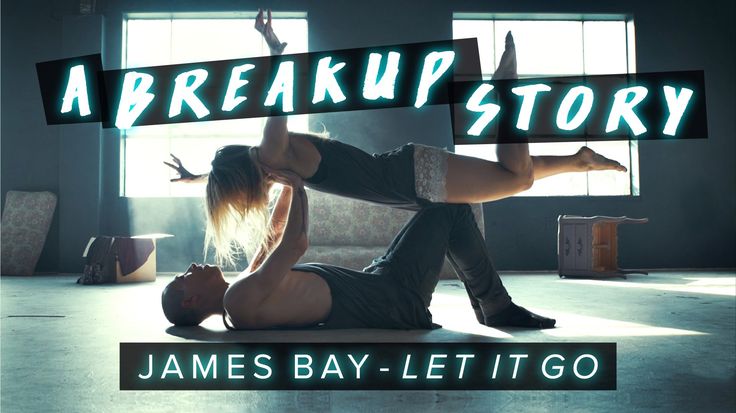 Producers and mix engineers are choosing to master their own tracks. Whether they are for labels, club play or SoundCloud, there’s one or two things you will need to bear in mind:
Producers and mix engineers are choosing to master their own tracks. Whether they are for labels, club play or SoundCloud, there’s one or two things you will need to bear in mind:
How loud?
If you’re doing this for a streaming service such as iTunes or Beatport you may wish to check the normalisation. Otherwise your super loud track with no dynamics will end up being turned down by the streaming service. resulting in a quiet track with no dynamics (not cool)
Once you have an idea of the loudness you want to achieve, a basic mastering chain can be thought of as a condensed down version of the mix stage, however, its only being performed on a single track and the adjustments are much more gentle.
Here’s a very simple mastering chain which should make your mix that little bit better.
Gain
To control the input gain. If you have gain staged properly up till this point you probably won’t need this plugin. A good mix-down should have maximum peaks of around -6dBs, allowing 6dBs of headroom to play with during mastering.
Stereo Widening
This is usually very gentle. standard practice for stereo width in a mastering situation is to push up the sides of the mix by a few dBs to make it sound wider and to make sure everything below around 150 – 200Hz is in mono.
EQ: This is the last chance saloon for any minor tonal balance changes. a standard thing to do here is to pull out a dB or so around 300Hz and to push up around 100Hz and 10KHz to create the upward down smiley face EQ shape which gives the psychoacoustic impression of sounding louder and clearer. For the more experienced guys, research into mid-side EQ and plugins such as Brainworx which are absolute game changers for mid-side mixing and mastering.
Compression: This is used as a final stage of very gentle mix glue. long attacks of 30ms and above and low ratios are common.
Limiting: The aim of the game here is to get your track peaking as close to 0 dBFS as possible.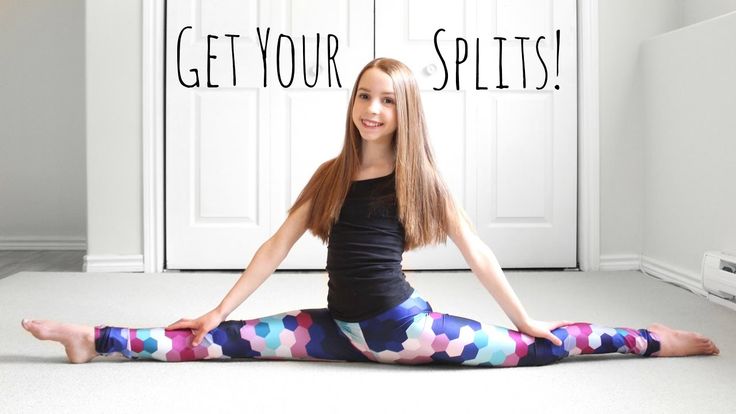 Remember that when you limit a signal you are going to be doing it at the cost of dynamic range which carries a lot of the `bounce’, ‘groove’ or ‘energy’ or a track. So think carefully when you have to weigh up the Loudness Versus Dynamics ultimatum.
Remember that when you limit a signal you are going to be doing it at the cost of dynamic range which carries a lot of the `bounce’, ‘groove’ or ‘energy’ or a track. So think carefully when you have to weigh up the Loudness Versus Dynamics ultimatum.
Loudness may sound better at first but after a few listens it is very often the case that your ears will begin to fatigue and you will favour the more dynamic version.
So that is the entire mix process. I imagine a few of you may have read this article with a bit of a puzzled look on your faces.
DO NOT WORRY!
Mixing takes a long time to learn, some people’s ears take a while to develop, but one thing is for sure – all the blog reading and knowledge in the world isn’t going to make you a better mix engineer without a lot of practice.
I really can’t stress this enough. Get as much practice as you possibly can, even if it means offering to mix your friends tracks for them. The more time spent mixing, the more you will be able to experiment with different mix concepts and train your ears.
If you found this article useful then check out our latest course – Tech House Tutorial 17. This course takes you from a blank canvas to a finished Tech House track over the course of 59 videos, and also includes the project and sample files..
For an instant 10% discount for the Tech House Tutorial 2017 course or any of the other products mentioned in this post, simply spread the love by sharing this blog using the button at the bottom of the screen. You will receive your discount coupon as soon as the share button is pressed.
Click share for an instant 10% coupon code
Share
Quick View
£15.00
Add to basket
Quick View
£15.00
Add to basket
Quick View
£15.00
Add to basket
Quick View
£15.00
Add to basket
Quick View
£15.00
Add to basket
Quick View
£10.00
Add to basket
Quick View
£10. 00
00
Add to basket
Quick View
£10.00
Add to basket
EDM Mixing: The Complete Guide
Making electronic music is a delicate art in many ways. However, you won't be able to achieve a great sounding track without learning how to properly mix electronic dance music. The genre has many key characteristics that give EDM its cardinal sound, and without understanding these aspects, it's hard to create a professional-sounding mix.
Below, we'll cover everything you need to know about mixing electronic dance music so you can create bangs from the comfort of your home. Let's dive into it!
What defines EDM?
EDM or Electronic Dance Music is a genre that continues to evolve today. In its simplest form, EDM refers to any electronic music that relies more on samples and synthesized virtual instruments than live recordings.
The early days of electronic music can be traced back to genres such as disco or Detroit techno. The emergence of more electronic instruments such as drum machines, mass-produced synthesizers and samplers.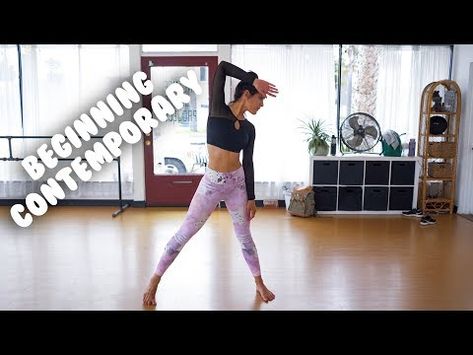 Listen to this techno classic:
Listen to this techno classic:
As you can see, the birth of techno music as we know it sounds very different from what we might consider "techno" today. Of course, techno is just a subgenre of electronic music, but it's true that digital audio continues to evolve and evolve as our musical tastes change.
There are a few things that define the genre today that need to be kept in mind when recording, producing and mixing EDM:
Heavy bass.
One of the most enduring characteristics of electronic music is the presence of a strong sub-bass and bass track. The sub-bass is usually cut in mono as it is meant to be played on club speakers that model this audio experience. The bass tracks of EDM music are so deep that you can sometimes feel the lower sounds of the frequency spectrum in your chest.
Powerful drums.
Although EDM songs may use a drum loop or two, the drum parts are not weak.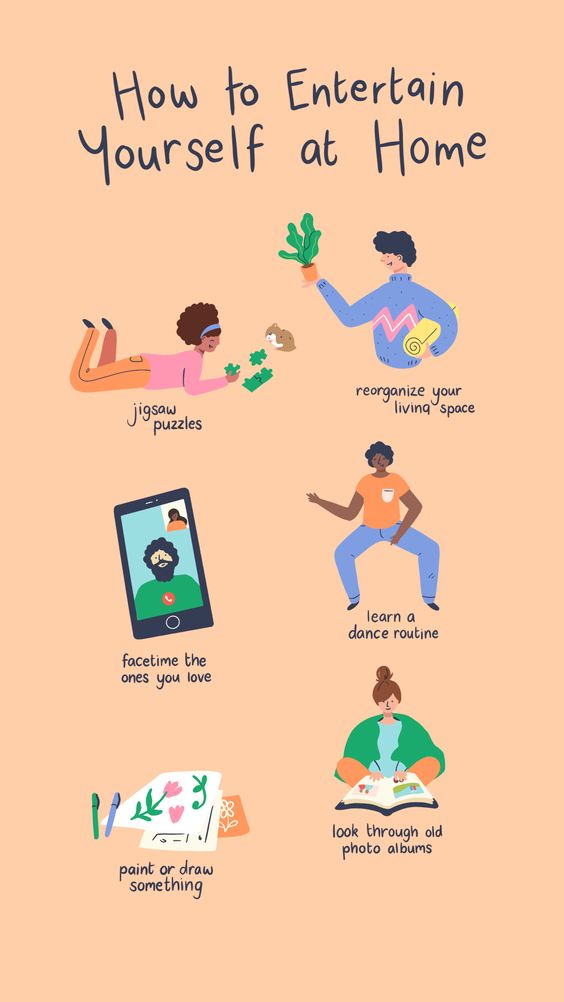 The most important sound parts in electronic songs are drums and bass. This is because these rhythm sections help drive the characteristic "dance" sounds that the genre is known for. It's common to see classic drum patterns like "4 on the floor" that emphasize beats 2 and 4.
The most important sound parts in electronic songs are drums and bass. This is because these rhythm sections help drive the characteristic "dance" sounds that the genre is known for. It's common to see classic drum patterns like "4 on the floor" that emphasize beats 2 and 4.
"A drop".
Much of the magic of EDM music lies in the tension and release created by the presence of a drop. Talented producers know how to create and transfer energy throughout the track, which is one of the main reasons why listeners return to this genre again and again. To create that punch or climax, EDM music uses a variety of automation, dynamics, and filters to weave elements into a well-balanced mix.
Typically at a constant and higher BPM level.
In order to increase danceability, EDM music is usually played at a higher BPM or tempo. The BPM of electronic music is usually set at 120 or higher, although there are exceptions to this rule. EDM tracks usually stay in constant rhythm throughout track, although EDM producers can create tension after chorus , adding additional sounds to the mix to further separate the drum section.
They are intended for "dance" settings.
EDM music originated in the club scene, so it's no surprise that it's danceable at its core. While there are many different types of EDM music, you can dance to almost any electronic sound, whether the song is happy or sad. See how EDM has changed over the years:
EDM mixing starts with the recording process
It's true that there aren't as many elements recorded live in EDM as there are in other genres. However, this means that the elements you record (usually the vocals) stand out much more. As with any genre, it's undeniable that creating music that sounds great starts with attention to detail during the recording phase. Here are just a few basic principles to keep in mind, but you can read our complete guide for a more complete overview.
Check your notes before moving on.
I can't tell you how many times a song has been doomed from the start due to poor recording. It's important to check your recordings and sound design before moving on, as the recording stage is fundamental to the mixing and mastering process. Check the recording on studio monitors, headphones and laptop speakers. If you're not sure the vocals sound good, record them again.
It's important to check your recordings and sound design before moving on, as the recording stage is fundamental to the mixing and mastering process. Check the recording on studio monitors, headphones and laptop speakers. If you're not sure the vocals sound good, record them again.
Choose patterns that go well with each other.
Remember that each sample you choose should be considered as part of a single whole. For example, you might want to choose a kick drum that works well with the bass. You can find a few samples that sound good on their own, but if they don't work in context with the rest of your mix, don't waste your time on them.
Find the right microphone for your vocalist.
Vocal recording is an art in itself. There aren't many recorded elements in EDM, which makes vocal recording even more important. Vocals will naturally stand out from the rest of your song, so you'll want to make sure they stand out for good reason.
Great vocal recordings start with choosing the right microphone for your vocalist. As a rule, a condenser microphone is used for pop or electronic vocals. These delicate mics tend to have a brighter sound, sometimes boosting the high frequencies. For harder vocals, a more stable dynamic microphone may be suitable, while for others, a thin but stable ribbon microphone may be appropriate.
As a rule, a condenser microphone is used for pop or electronic vocals. These delicate mics tend to have a brighter sound, sometimes boosting the high frequencies. For harder vocals, a more stable dynamic microphone may be suitable, while for others, a thin but stable ribbon microphone may be appropriate.
Whichever microphone you choose, be sure to consider the proximity effect. This principle states that the closer the vocalist is to the microphone, the darker the vocals will sound. It will also sound louder. You have to be careful because EDM relies on the purity of the bass.
Tune with the vocalist audio interface to the optimum recording level for clean, clear vocals. Your vocalist may prefer to work with a dry signal or on a wet track, but be sure to test dry vocals before you start mixing.
Improve your production before you move on to mixing
As any mastering engineer will tell you, a great master starts with a strong mix. Want to know where a strong mix starts? From a properly produced track.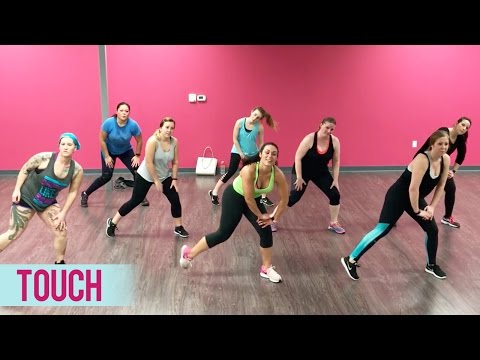 Before you even think about mixing music, start with production improvement . Here are a few basic principles to keep in mind before jumping into the mix.
Before you even think about mixing music, start with production improvement . Here are a few basic principles to keep in mind before jumping into the mix.
Keep your paths organized and symbiotic.
You can have many tracks, but only a few elements should stand out in your mix. When producing, ask yourself if every sound you add actually improves the overall mix. If not, then it's time to cut it out. It can be hard for new producers to let go of sounds they've invested a lot of time into, but seasoned engineers and producers know it's just another standard part of the process.
While EDM projects tend to have more tracks than other genres of music, you'll notice that many of your layers still serve to enhance the depth of a few key parts. Your session may have more than a hundred tracks, but most of them may be parts of the main melody, drums or bass section. One of the most important mixing and mixing tips is that each sonic element should serve to complete the sound of the entire mix.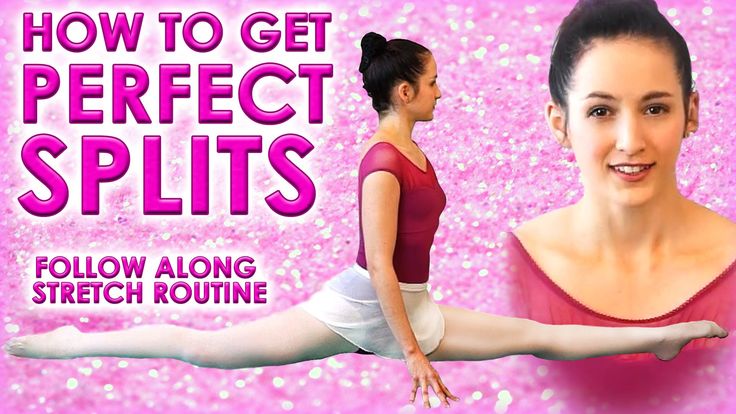
The main thing is to save energy.
Because EDM music is about dancing, it's important to keep the energy going throughout the track. While you want to create a consistent vibe throughout the track, you still want to keep the listener hooked by making your melodies fun.
It could be changing the drum pattern every couple of bars, using automation, or creating tension for your big "fall". Whatever it is, make sure you don't get lazy in your production. Even if it's subtle, small changes throughout a song can make a huge difference to an entire project.
Use your favorite songs as inspiration.
There is nothing wrong with standing on the shoulders of giants, so to speak, to justify your next creative decision. Reference tracks are useful for more than just mixing. They are also incredibly helpful during the writing and production phase. For example, you can define the structure of your song by modeling it on one of your favorite EDM tracks.
You can also notice how the dynamics change throughout the track and apply it to your own project.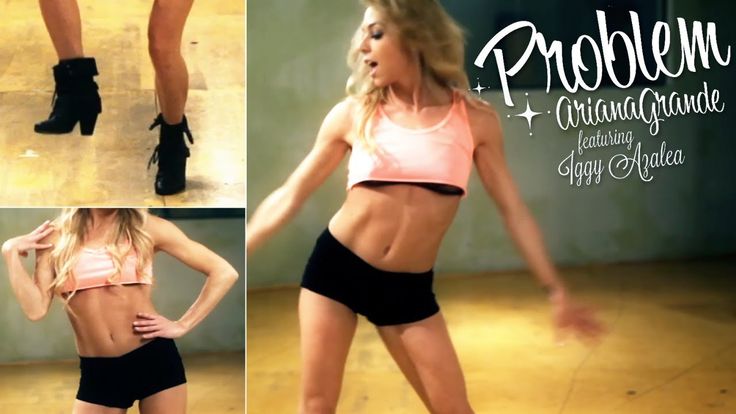 While you never want to copy artists' work, using them as rough inspiration can make it much easier to make informed creative decisions while you're still figuring out your original sound.
While you never want to copy artists' work, using them as rough inspiration can make it much easier to make informed creative decisions while you're still figuring out your original sound.
Focus on falling.
EDM music is not the same without a strong drop. Drop" usually refers to the chorus of an electronic track, which may or may not include vocals. To create a strong drop, try to create tension in the chorus and couplet .
You can create dynamic contrast between chorus and verse by changing the volume, using parallel processing, or trying out a new sonic element in the chorus. In EDM music, tempo building is paramount, so make sure you give the drop the attention it deserves.
How to mix EDM
Without further ado, here is our complete guide on how to mix EDM. Keep in mind that there is no one right way to mix music, so one mixing engineer must have a different sound design strategy than another.
This guide should only serve as a blueprint for creating your own tracks in the EDM space, but don't let these loose guidelines limit your creativity.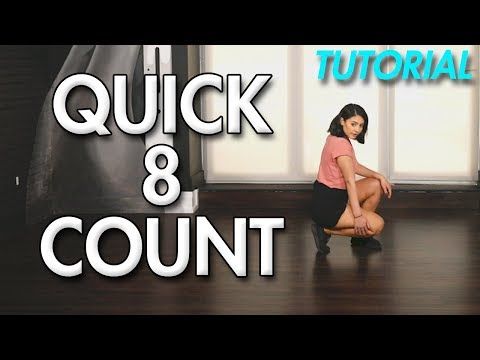
- Find a suitable reference track.
- Start with faders.
- Create clear and expressive low frequencies.
- Remove what you don't need.
- Work on the relationship between drums and bass.
- Stack the layers.
- Create contrast with dynamics and stereo imaging.
- Compression is your best friend.
- Use FX and silence to your advantage.
- Test your mixture under various conditions.
- Check your mixture after the break.
- Create multiple mixes if necessary.
Find a suitable reference track.
New producers often neglect to find the right reference track for their mixes. Reference tracks are important for all genres as they give us audible clues about how certain sounds should be balanced in the mix. Whether you're using one or more reference tracks, it's wise to place these audio files directly into your mix so you can hear them properly through your DAW .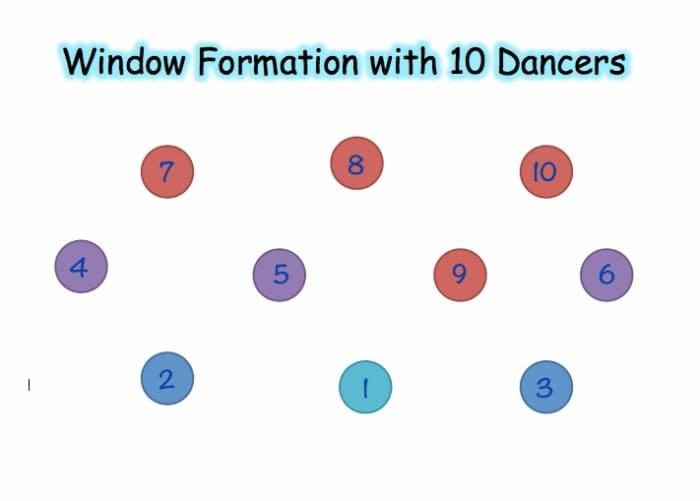
Listen to your reference track to answer any questions you may have during the mixing process. Not sure if your kick is too loud against the bass? Can't figure out if you need to push the vocals more forward in the mix? Check your reference(s).
Even the most professional mixing engineers use this technique to creating the purest mix possible . Cross-check your mixes with some of your favorite tunes and you'll start to see the best way to quickly improve your tunes.
Start with faders.
A good mix starts with a good balance. This means that one of your most powerful tools is just the volume. This is why many mixing engineers start by changing the volume or adjusting amplification before proceeding to any other element of the track.
You'll be surprised how different your mix can sound if you experiment with volume changes alone. Generally speaking, the sound elements you want to highlight should be louder than other sounds in the mix. However, you don't want your mix to peak above -6 dB. This is because you want to give your mastering engineer enough headroom to properly compress the final mix.
This is because you want to give your mastering engineer enough headroom to properly compress the final mix.
In many cases, you may have 1-2 sound elements that stand out from the rest of the soundscape. Keep in mind that high frequencies are easier to hear, so they may not need to be boosted as much as lower or mid-range sounds. Make sure you are mixing without plugins on the master channel to get an accurate representation of your track.
Create clear and expressive low frequencies.
In EDM music, low frequencies are especially important. Therefore, it is customary to "divide the bass", so to speak, into parts. In this process, you create bass using two or more different tracks. The lowest track, usually somewhere below 100Hz, uses a pure sine wave or sawtooth wave, and the bass above is cut off by a high pass filter below 100Hz.
This way, your sub frequencies will be very clean, which will help keep the low frequencies tight and punchy. Also, club systems reproduce these ultra-low frequencies in mono anyway, so there is no need to select the sound to be distributed to the stereo field.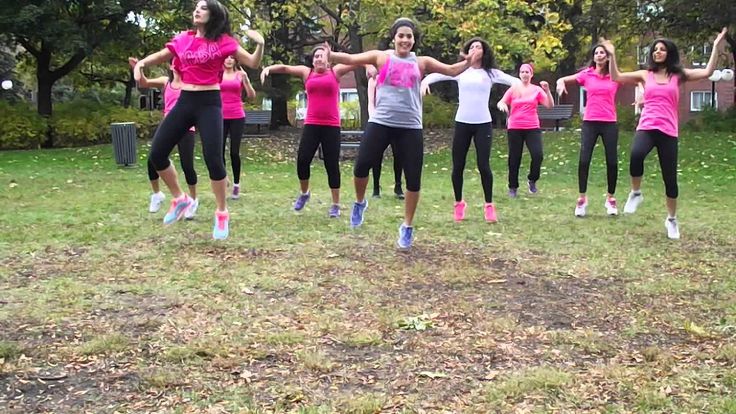
Remove what you don't need.
Many producers focus so much on adding new sounds to the mix that they forget the importance of removing unwanted parts. Once you've cleared out any unnecessary tracks, you may need to cut the frequencies to make room for your main parts, such as the drums or bass section.
For example, you can use high pass filter , like this one in Ableton Live, to cut low frequencies in tracks that might not need it, like vocals or hi-hats:
Work on the relationship between drums and bass.
Drums, especially the kick drum, are one of the most driving forces in an EDM track. Often in EDM music, the bass track is connected to a kick drum or snare with a side chain. Side chain compression mutes or compresses a sound in relation to another. Thus, whenever a beat is present, the bass is lowered to make room for the beat, which occupies a similar frequency space.
However, sidechain compression is not the only way to work on this coveted connection. Using high pass filters to boost low frequencies is also a great way to create room for drums and bass. Just remember that these two sonic elements are vital to creating a groove, so they should be one of your top sonic priorities.
Using high pass filters to boost low frequencies is also a great way to create room for drums and bass. Just remember that these two sonic elements are vital to creating a groove, so they should be one of your top sonic priorities.
Stack the layers.
All elements of your song should work in tandem to create a clear, complete mix. Several sounds can make up the body of one sound idea. For example, your main synth line may consist of several synths, each occupying a different part of the frequency spectrum. When in doubt, use a spectrum analyzer to see which parts of the mix need more help. Create coherent layers to add depth to your mix rather than adding as many different parts as you can think of.
Create contrast with dynamics and stereo imaging.
EDM music uses a variety of volume and filter automation to create a more dynamic listening experience. You can use simple tools like volume automation to create contrast between the verse and the chorus of a song.
Playing with panning different sound elements can also help your song expand. In any case, it is very important to create a contrast: You don't want your song to seem very extended forward, then very wide throughout the track. It may make sense to switch between different sounds as you move from one section to another, such as between a verse and a chorus.
If you're not sure how to make it interesting, listen to a few of your favorite songs. There are many ways to create contrast and keep the listener's interest throughout the mix. Think of your sounds as living, breathing compositions. The dynamics of the track will make it much more enjoyable to listen to, even if you use the same chord progression , bass line and drum sounds.
Compression is your best friend.
You need to be careful not to over-compress, but compression can often be the glue you need to hold separate pieces together. Compression works by reducing dynamic range between two sounds , or makes the loudest sounds quieter, and increases the perceived loudness of the lowest sounds.
EDM is known for using tons of compression in the mix, but using too much of it can lead to a lifeless mix. One of the best ways to deal with this is parallel processing: In this method, the original dry signal is mixed with the processed, compressed signal. This way you get some of the preserved dynamics of the original sound and at the same time enjoy some of the processed signal. This method is also known as "New York compression".
Use FX and silence to your advantage.
Most producers know that FX is an important part of creating build-up in EDM tracks, but don't forget the importance of silence in your songs. Silence itself is a tool. Just look how much more impressive the drop of this song is Death by Techno with silence set directly in front of it:
EDM also uses a lot of FX like risers and downlifters to create excitement throughout the track. Think about the importance of white noise when mixing and mastering your electronic track.
Think about the importance of white noise when mixing and mastering your electronic track.
Test your mixture under various conditions.
Testing your mix on different systems is important for any genre of music, but it's especially true for bass-heavy genres like EDM. You'll want to create the best version of your mix in your own room, but it's important to test your mix in a variety of sonic environments before settling on your final mix.
You should test your sound on studio monitors, car speakers, laptop speakers. Basically on any playback devices you can find to check the true stereo image of your track. Sound behaves differently in different environments, so any problems that arise when mixing in different playback environments should be reconsidered. It's especially important to test your mix with both stereo and mono outputs to reduce the chance of phase distortion.
Check your mixture after the break.
Sometimes the best way to improve your mix is to let it rest.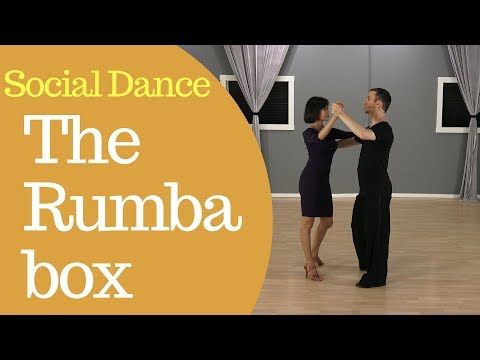 All engineers must consider ear fatigue: Unfortunately, our ears naturally become accustomed to a particular sound after repeated listening. While you can generally trust your ears when mixing, you need to keep this in mind.
All engineers must consider ear fatigue: Unfortunately, our ears naturally become accustomed to a particular sound after repeated listening. While you can generally trust your ears when mixing, you need to keep this in mind.
Get enough sleep before mixing the final mix. Even the best engineers sometimes wake up with surprisingly bad mixes, so don't despair. Get in the habit of letting your track breathe before finishing. Sometimes time is your main resource when it comes to polished audio.
Create multiple mixes if necessary.
Multiple mixes can be useful for creating different sound variations for your listeners. In any case, you should create a new session each time you mix, in case you need to go back to an earlier version of a song.
Also, don't despair if you're not satisfied with your first mix. Sometimes even the best engineers have to create multiple mixes to get the best possible version of a track. It's also not uncommon for mastering engineers to ask you to change the mix.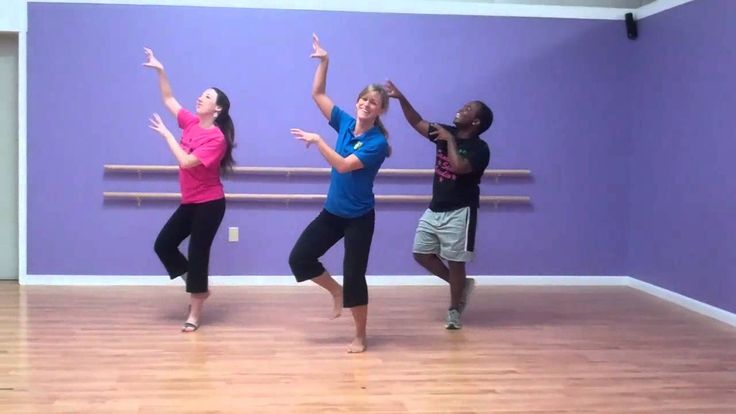
Like any other skill, blending gets easier with practice. You'll find that the more you mix, the more natural it becomes, so be sure to experiment with as many iterations of the mix as you like.
Therefore, there is no single correct way to mix an EDM track. However, these general EDM mixing tips can provide a solid foundation for perfecting your songs. After all, the best way to practice mixing electronic tracks is to do it on a regular basis. Get on stage and start mixing your music!
Audio Mixers Electronic dance music DJ mixer Audio mixing, mixer, miscellaneous, angle, text png
Audio Mixers Electronic dance music DJ mixer Audio mixing, mixer, miscellaneous, angle, text pngabout it png
- Image size
- 512x512px
- File size
- 11.
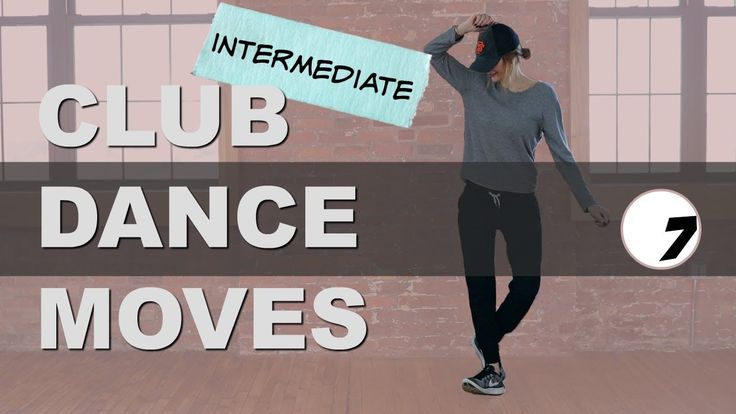 01KB
01KB - MIME type
- Image/png
resize PNG
width(px)
height(px)
License
Non-Commercial Use, DMCA Contact Us
- vinyl player illustration, Music Computer Icons Icons Disc jockey Compact disc Phonograph record, record simple, miscellaneous, logo, monochrome png 512x512px 27.11KB
- Recording studio Audio mixing Audio Mixers Audio mastering Computer Icons, audio mixer, text, rectangle, logo png 1000x1000px 12.31KB
- Compact Cassette Audio disc jockey Tape recorder Mixtape, audio cassette, miscellaneous, electronics, media png 900x900px 514.
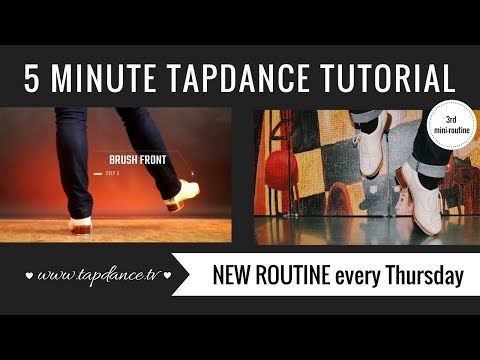 47KB
47KB - DJ illustration, Disc jockey DJ mixer Nightclub, dj, electronics, sing A Song, speaker png 2396x2246px 792.46KB
- Disc jockey DJ mixer Phonograph record, record player, electronics, silhouette, phonograph png 659x431px 35.48KB
- DJ using black and gray DJ controller surrounded by pink and blue smoke, Disc jockey Electronic dance music DJ mixer, Dj Event, miscellaneous, purple, stage png 900x700px 966.45KB
- Disc jockey Deckadance Music Virtual studio Technology Virtual DJ, dj, miscellaneous, computer Dj, disc Jockey png 1544x1486px 2.92MB
- Virtual DJ Disc jockey Audio Mixers DJ controller Audio mixing, dj, computer DJ, loop, audio Mixers png 512x512px 185.64KB
- Pioneer DJ DJ controller Pioneer DDJ-SX2 Disc jockey, dj machine, electronics, sound, disc Jockey png 800x475px 97.5KB
- Cross/CrossDJ Disc jockey Audio mixing Music DJ controller, android, black, music Download, disc Jockey png 512x512px 18.71KB
- Microphone Lauten Audio Condensatormicrofoon Diaphragm Sound, audio studio microphone, electronics, studio, recording Studio png 1071x1600px 1.25MB
- Mixtape Compact Cassette DJ Mix Music Song, cassette player, love, electronics, sound png 512x512px 365.
 08KB
08KB - Chord Karaoke Microphone Sound System, Microphone, electronics, recording Studio, sound png 715x587px 430.21KB
- DJ Mixer Pioneer DJ DJM-450 Audio Mixers Disc jockey, mixer, electronics, media Player, audio Mixer png 5309x7185px 37.43MB
- Tractor Disc jockey DJ controller Native Instruments Virtual DJ, native instruments, text, logo, monochrome png 1000x1000px 42.04KB
- Audio Mixers Audio mixing Sound Disc jockey, music studio, computer Keyboard, monochrome, sound png 640x640px 265.03KB
- Audio Mixers Recording studio Music Hemmastudio Audio mixing, mixing console, television, studio, monochrome png 839x678px 659.
 96KB
96KB - DJ mixer Disc jockey Audio Mixers Computer Icons, mixer, text, rectangle, monochrome png 512x512px 14.29KB
- Don Armando Disc jockey DJ mix Musician Phonograph record, DJ Concert, white, text, logo png 586x500px 38.7KB
- DJ controller Remix DJ mixer Audio Mixers Tractor, dj producer, miscellaneous, electronics, audio Equipment png 900x900px 291.66KB
- Disc jockey Phonograph record Music Record collectibles Nightclub, dj with turntable, miscellaneous, sound, disc Jockey png 883x720px 176.28KB
- Musician Radio Musical theater Recording studio, Podcast Microphone, microphone, recording Studio, musician png 360x709px 228.
 4KB
4KB - DJ with turntable, Logo Disc jockey Music, DJ s Black, hand, internet Radio, silhouette png 1001x611px 61.9KB
- red and gray portable speaker system, Loudspeaker Disc jockey Phonograph record Remix, dj, miscellaneous, computer, sound png 1010x912px 648.22KB
- Recording studio Microphone Sound Recording and Reproduction, recording studio, television, electronics, monochrome png 1000x2113px 198.19KB
- Disc jockey DJ mixer Music Remix, others, miscellaneous, electronics, media png 710x520px 133.69KB
- silhouette of dj, Disc jockey Music DJ mixer Podcast Nightclub, DJ silhouette material, animals, logo, human Silhouette png 1001x611px 75.
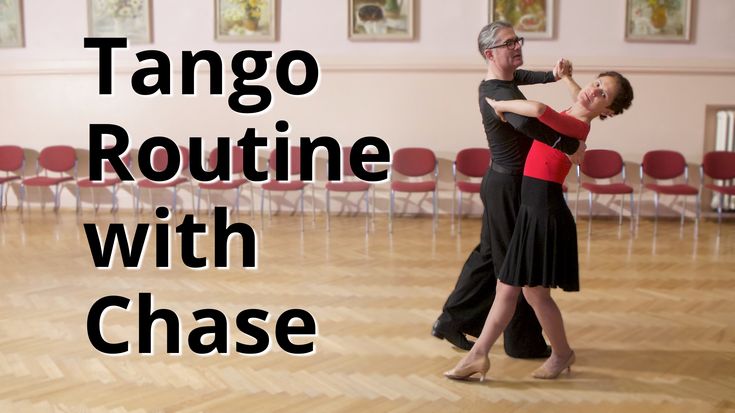 79KB
79KB - Laptop Loudspeaker Boombox Sound Microphone, Laptop, electronics, microphone, bluetooth png 500x550px 287.44KB
- Audio Mixers Audio mixer Disc jockey Music DJ mixer, Mixer, miscellaneous, text, rectangle png 512x512px 11.91KB
- DJ player, Disc jockey Mixing console DJ mixer Nightclub Audio mixing, nightclub dj music, virtual DJ, music DJ, mp3 Player png 706x1063px 559.8KB
- Disc jockey Music Audio mixing DJ Mixer, dj, hand, logo, computer Dj png 512x512px 11.95KB
- Recording studio Sound Recording and Reproduction Home recording Music Audio mixing, studio, electronics, studio, recording Studio png 1920x1279px 2.
 84MB
84MB - silhouette of dj, Disc jockey Sound system Nightclub Music, dj, miscellaneous, hand, monochrome png 1200x800px 130KB
- Pioneer DJ Disc jockey DJ controller CDJ Audio Mixers, mixer, miscellaneous, electronics, audio Equipment png 5293x2810px 17.3MB
- Wave Sound Audio engineer Computer Icons, sound wave, angle, text, logo png 1024x1024px 6.43KB
- disco ball, Disc jockey Sound Music, music, sound, lights, stage, sphere png 1122x946px 640.15KB
- Musical note Icon, 3D stereoscopic exquisite musical notation, musical notes, white, 3D Computer Graphics, text png 569x584px 132.
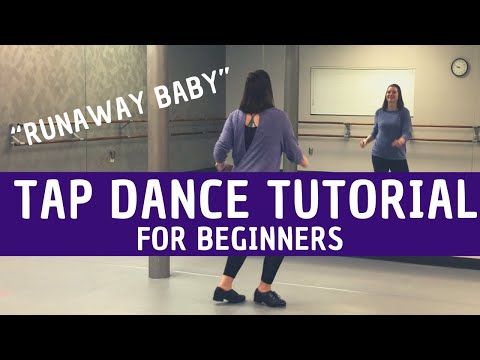 8KB
8KB - black Pioneer DJ turntable, Pioneer DJ Disc jockey DJ controller Virtual DJ DJM, cartoon dj, miscellaneous, electronics, jockey png 960x540px 2MB
- DJ controller, Disc jockey Music Nightclub DJ mix, DJ Music Color Concept Map, computer Wallpaper, circles, desktop Wallpaper png 1920x1200px 999.4KB
- Disc jockey DJ mixer Music, dj, miscellaneous, sound, jockey png 774x1032px 251.52KB
- Disc jockey Pioneer DJ DJ mixer Musician Audio, musical instruments, text, logo, logo Vector png 789x330px 11.37KB
- gray and black corded headphones, Disc jockey Phonograph DJ mixer Nightclub, Black headphones, electronics, black Hair, black White png 782x798px 493.
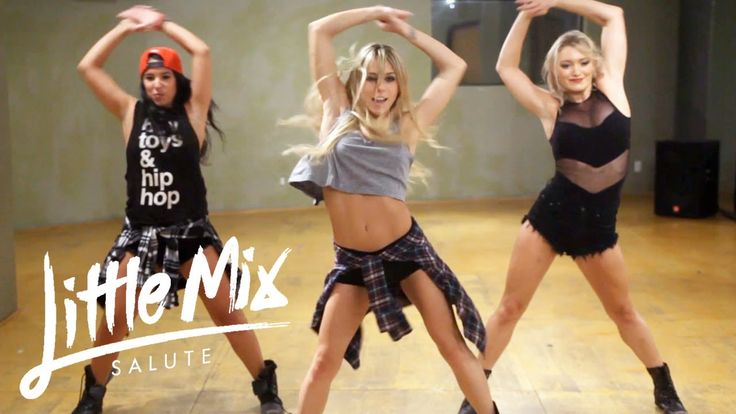 19KB
19KB - DJ mixer Audio Mixers DJM Disc jockey CDJ, ping pong, miscellaneous, electronics, media png 1200x900px 832.78KB
- DJ controller Audio Mixers Disc jockey DJ mixer Hercules DJ 4Set, musical instruments, electronics, desktop Wallpaper, audio Equipment png 715x474px 231KB
- Compact Cassette Magnetic tape Compact disc Sound Recording and Reproduction, others, miscellaneous, electronics, media png 1409x1600px 2.66MB
- Audio Mixers Digital mixing console BEHRINGER X32 Professional audio, mixer, miscellaneous, electronics, digital png 900x900px 535.48KB
- Learn more
- How to default dance in real life

- How to do easy break dance moves

- How do you flamenco dance

- How much is just dance 2016 wii

- Learn how to shuffle dance for beginners

- How to dance very well
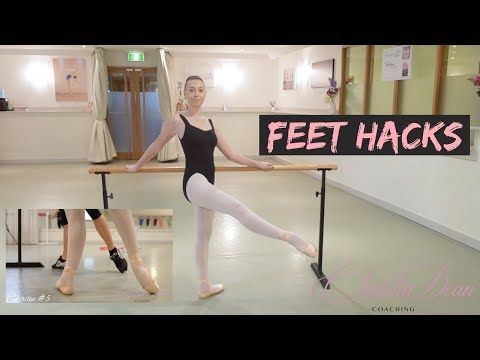
- How do you dance in heels

- How to prepare for homecoming dance

- Just dance teach me how to dougie

- How to shuffle dance steps

- How to tut dance

